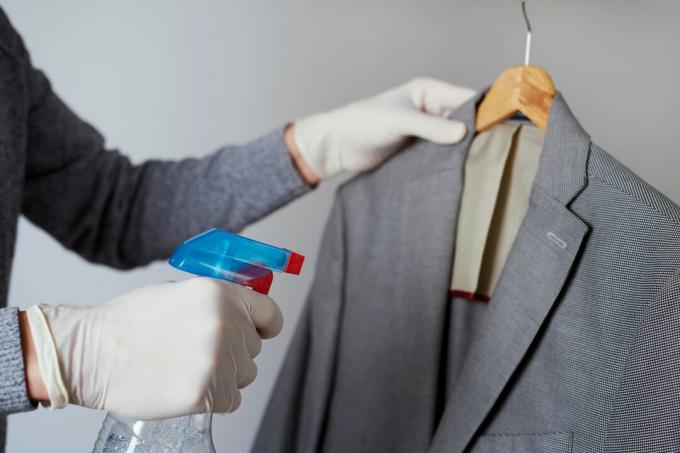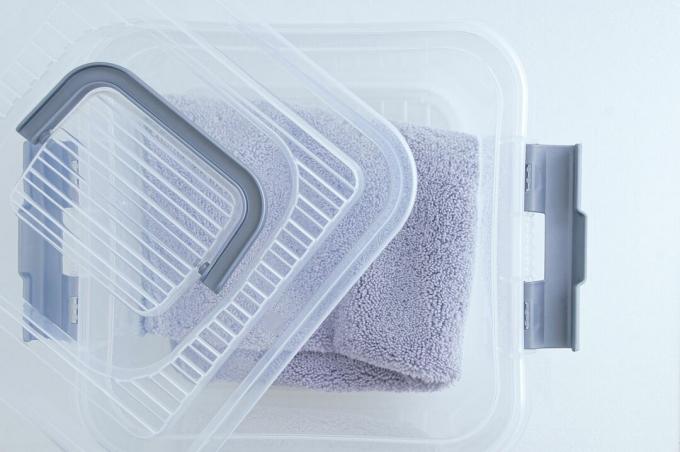If you suspect that your clothes are infected with moths, this article will provide you with advice and tips on how you can safely identify moths in your wardrobe and combat them sustainably.

Has it been found that the closet has suddenly become an insect hotel for Clothes moths (Tineola bisselliella), despair often spreads. But you are not powerless against the plague of moths in the closet. As a rule, you can get rid of the little pests with simple means, without using chemicals or having to call the exterminator.
contents
- Where do moths come from in the closet?
- Identifying moths in your wardrobe
- Fight moths in the closet
- Prevent moths in the closet
Where do moths come from in the closet?
Clothes moths often come into the home with second-hand clothing or used carpets and furniture. Apart from that, however, they can also get into the house naturally, because the small butterflies can also find plenty of food outside in nature, for example in bird nests. From there, it is usually not far to the wardrobe at home.
Tip: Incidentally, an infestation of the wardrobe with moths is not a sign of poor hygiene. Rather, it shows what kinds of fabrics are in your wardrobe. The larvae of the moths need keratin to develop. They are particularly interested in clothing made of wool, silk, cashmere or leather and furs. Clothes moths can also feed on human hair and flakes of skin that cling to clothing.

Identifying moths in your wardrobe
First of all, you can recognize a moth infestation in your wardrobe very practically by holes in your clothes or the butterflies that suddenly appear in your wardrobe. Clothes moths are rather inconspicuous. Adult animals are up to 1.5 cm long, have ciliate, shiny wings and are dark brown to yellowish, depending on the food they eat. Flying animals are mostly males looking for females. After mating, a female can lay up to 250 eggs, from which larvae hatch after about two weeks. Under optimal growth conditions, i.e. at 24 ° C and a humidity of up to 75%, it takes 60 days for the larvae to develop into adult butterflies.

If you are unsure whether there really are moths in your closet, or if you want to monitor the development of the moth number, pheromone traps like ours are a good choice Plantura clothes moth trap at. These moth traps for wardrobes are provided with special sexual attractants that are attractive to male butterflies. Since the traps are also sticky, attracted males stick to the trap, so that a moth infestation in the wardrobe can be detected at an early stage and the effectiveness of the fight can be monitored. However, pheromone traps are unsuitable for combating, as they do not catch every single male. This means that females can still be fertilized, which then lay around 250 eggs each.
Fight moths in the closet
Before starting to combat moths, you should use specific pheromone traps to determine whether they are actually clothes moths. If you find butterflies on the traps with the sex hormones, you have certainty and can take further steps to combat it. Moth traps should also be used during control to see when it was successful. Otherwise, even a small remaining population can multiply again strongly.

Many chemical agents such as moth and insect sprays are offered to combat it. However, since the substances it contains are often toxic or irritating to humans, great caution is required when using them.
But moths can also be found in the closet naturally using home remedies in a sustainable and permanent manner can be successfully fought, so that chemical agents or exterminators are only used in an emergency must become.
A biological and sustainable alternative to combating moths in the closet are parasitic wasps of the genus Trichogramma. The little animals have little to do with the commonly known wasps. Parasitic wasps are around 0.4 mm in size and can hardly be seen with the naked eye. Furthermore, they lack the typical piercing tools and instead of our food, the little animals target insect eggs. Parasitic wasps lay their own eggs in those of the host animals, whereby the host larvae in the eggs die and the development cycle of the moths is interrupted.
Also ours Plantura parasitic wasps against clothes moths belong to the genus Trichogramma and are a species that specializes specifically in clothes moths.

If you decide in favor of our ichneumon wasps, you will be sent cards six times at two-week intervals, on which there are parasitic wasps in different stages of development. This covers the entire life cycle of the clothes moth. One card is sufficient for approximately 1 m², so that 4 cards are sufficient for an ordinary wardrobe. Since our parasitic wasps really only parasitize clothes moths, they pose no danger to humans or other animals. As soon as your wardrobe is moth-free, the parasitic wasps literally only have dust left.
Another way to combat clothes moths in the closet is to try applying heat or cold to clothes. For example, very hot washing can help. However, this is not possible with many items of clothing made of wool, as they would become matted and shrink. Otherwise, on very hot days, you can put your clothes, possibly also covered with black foil, in the blazing sun. The other extreme, which clothes moths cannot tolerate, is cold. This is why you can put infected items of clothing in the freezer for at least four weeks. One problem with combating clothes moths with heat or cold is that all clothes should be treated at the same time. Otherwise, the moths will die in the clothes that have just been treated, but they will continue to multiply in the closet. And when the moth-free clothes go back into the closet, they will be infested again. To prevent this, clothes can be packed in airtight boxes, for example.

In addition to every treatment, the wardrobe should be cleaned and corners and cracks vacuumed thoroughly. Then you can wipe the cupboard with vinegar water, for example, because clothes moths avoid this extreme smell.
Prevent moths in the closet
Clothes moths don't like the smell of lavender or cedar wood. For example, lavender soaps, scented sachets or pieces of cedar wood in the closet help keep moths away. However, when used for a longer period of time, it can lead to habituation effects, which is why this method does not offer 100% security. In addition, you should only store, for example, winter or summer clothes when they are washed and pack particularly vulnerable items of clothing in airtight garment bags or boxes. Then clothes moths have no chance of getting to them. Insect screens on the windows and regular vacuuming are other things you can do to prevent moth infestation.
Tip: If you own a lot of fragile clothing, such as wool, silk, fur or a collection of feather boas, it is safer to always have a moth trap hanging in the closet. So you can react in good time and there is no stronger infestation.

Did you know that moths can also attack carpets? In our article Moths in the carpet you will find helpful tips on how to get rid of the intruders.
